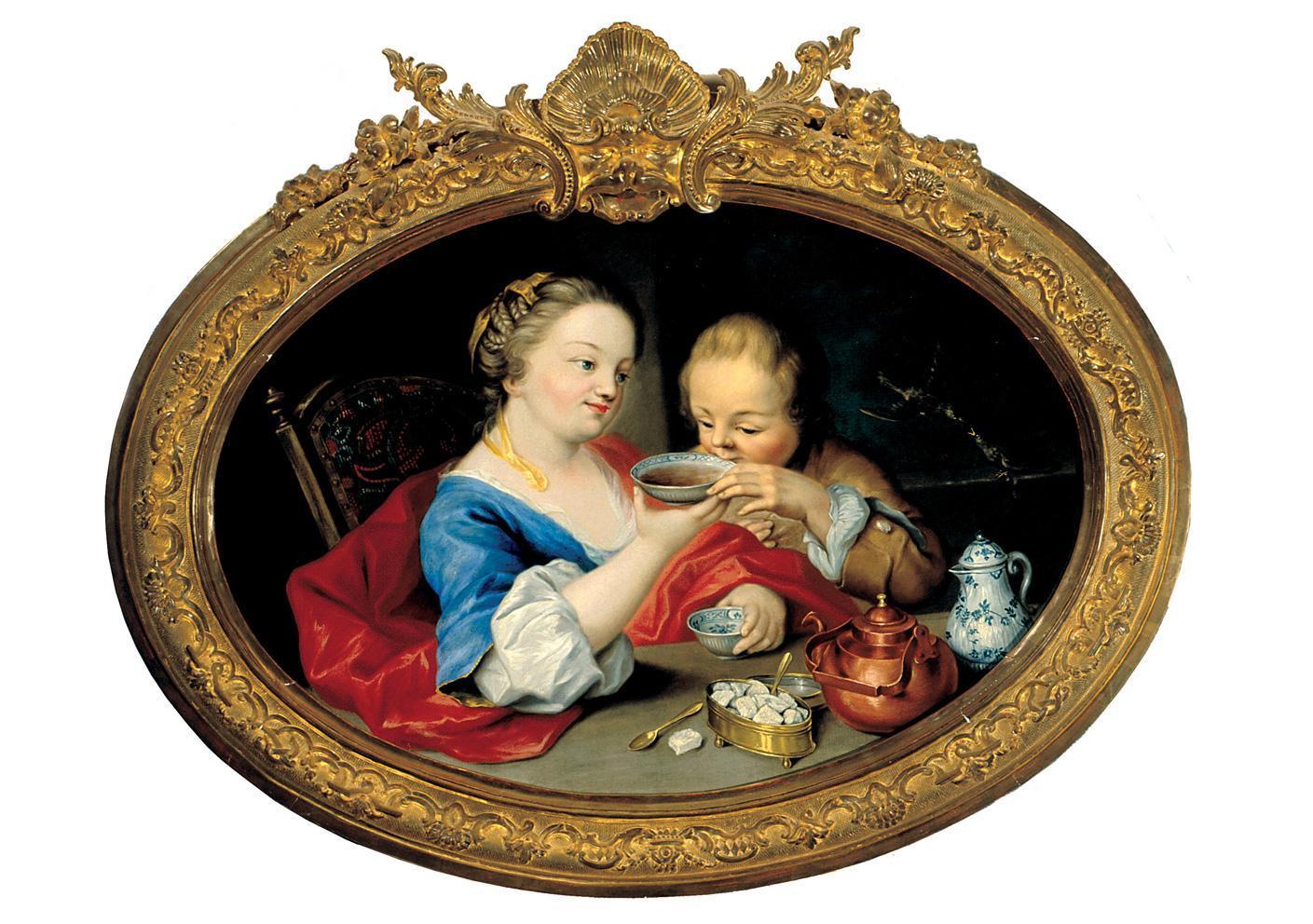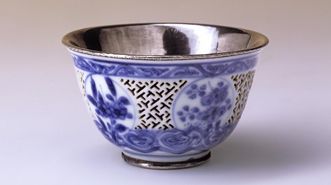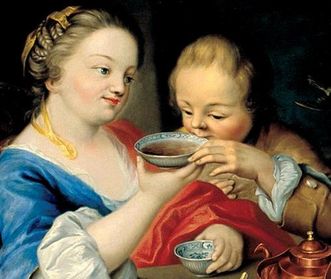Symbol of the five senses
The painting is part of a series of four symbolizing the five senses: sight, smell, touch, hearing, and finally, taste, represented by the two tea drinkers. The paintings originated in the first half of the 18th century, at the hand of court painter of the Electoral Palatinate, Johann Philipp van der Schlichten.





